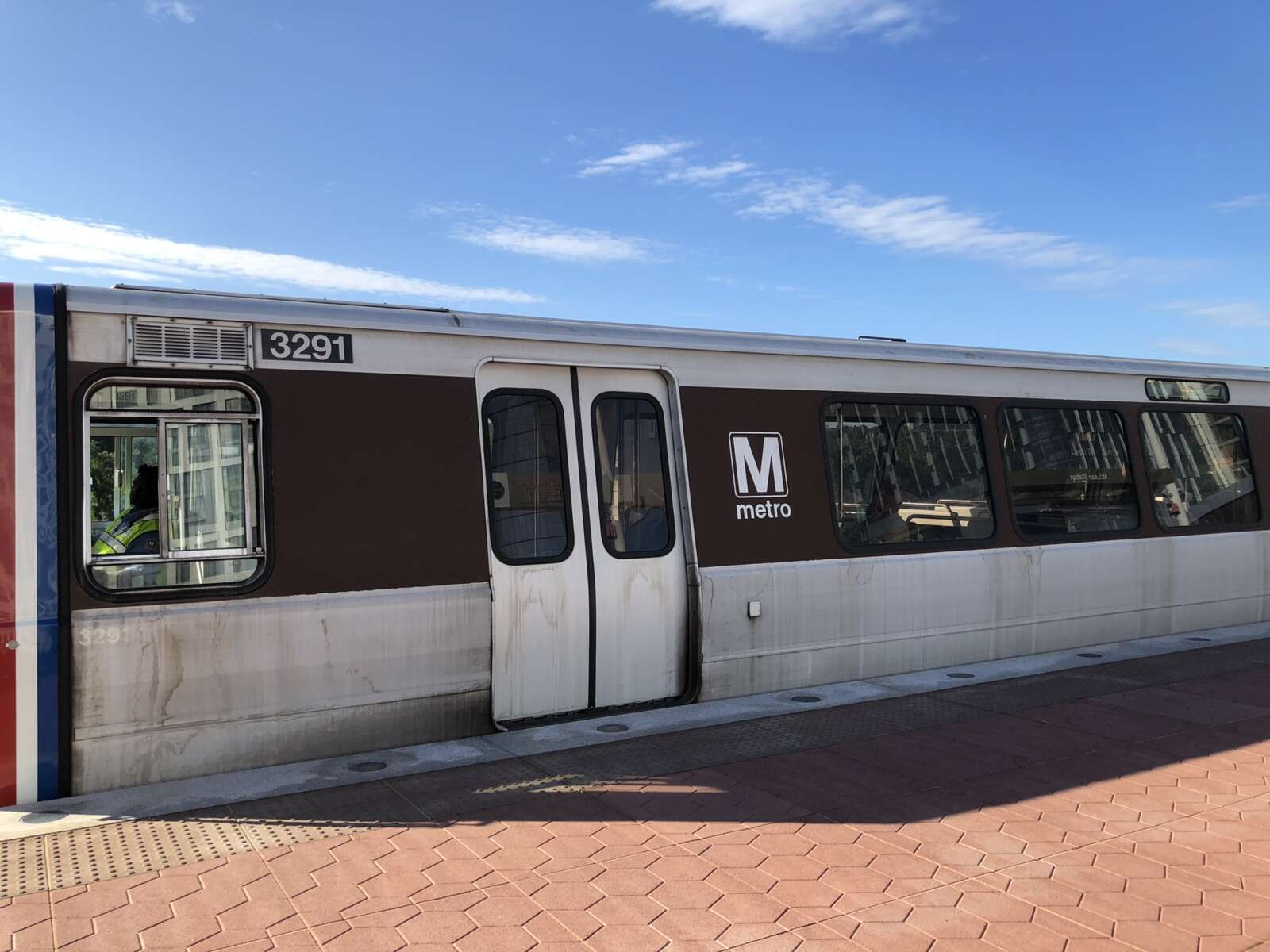
The Fairfax County Board of Supervisors is asking the county’s General Assembly delegation to oppose Gov. Glenn Youngkin’s proposed funding cuts to Metro in the state’s budget.
During a board meeting on Tuesday (April 16), supervisors unanimously approved a letter written by Chairman Jeff McKay, Braddock District Supervisor James Walkinshaw, and Dranesville District Supervisor James Bierman, asking the delegation to oppose the cuts and retain the funding needed to address the Washington Metropolitan Area Transit Authority’s (WMATA) estimated $750 million shortfall.
The General Assembly passed the FY 2024-2026 biennium budget in March which included $149.5 million from the state to address WMATA’s funding shortage in FY 2025 and FY 2026, according to the letter.
“This funding, which is expected to be matched by the local funding partners, including Fairfax County, is essential to putting WMATA on sound financial footing and retaining its consistent operations.”
A month later, Youngkin announced his proposed budget amendments, which included cutting $113.8 million of WMATA’s funding. Instead, Youngkin urged localities to use funds previously allocated to them through state assistance.
However, the county clarified in its letter that this money — provided to the region through the Northern Virginia Transportation Commission (NVTC) by the Northam Administration in 2022 — was used to cover immediate Metro payments following the pandemic and to reserve the remainder for “ongoing needs.”
Even with the additional funding, the letter says the county expects the money from the NVTC to be largely depleted soon, making their request even more vital.
“We know WMATA is absolutely essential to our regional economy,” McKay said during Tuesday’s County Board meeting. “It is essential to Virginia’s economy, bringing in over $1 billion a year into the general fund.”
He also noted how the lack of funding could impact taxpayers.
“If this money doesn’t come from the state, where will it come from? From the real estate taxpayers of Fairfax County. That’s where it will come from,” McKay said.
Springfield District Supervisor Pat Herrity said he was reluctantly supporting the request, saying Metro needed to “figure out how they’re going to get their costs under control.”
“We’ve got to get the long-term answer figured out because, you know, punting it down the road with a couple more years of ridiculous funding increases is not necessarily the best answer,” Herrity said.
Citing a 2017 study by former U.S. Department of Transportation Secretary Ray LaHood, Walkinshaw noted that Metro would need $500 million a year in dedicated funding to achieve stable financial footing, a burden that would ultimately fall on resident taxpayers.
“This idea that there are hundreds of millions of dollars or billions of dollars of cost savings to be found at Metro is a fantasy,” he said. “The amount needed in dedicated funding to prevent us from having to go back to property taxpayers every single year is in the hundreds of millions of dollars. That’s just math.”
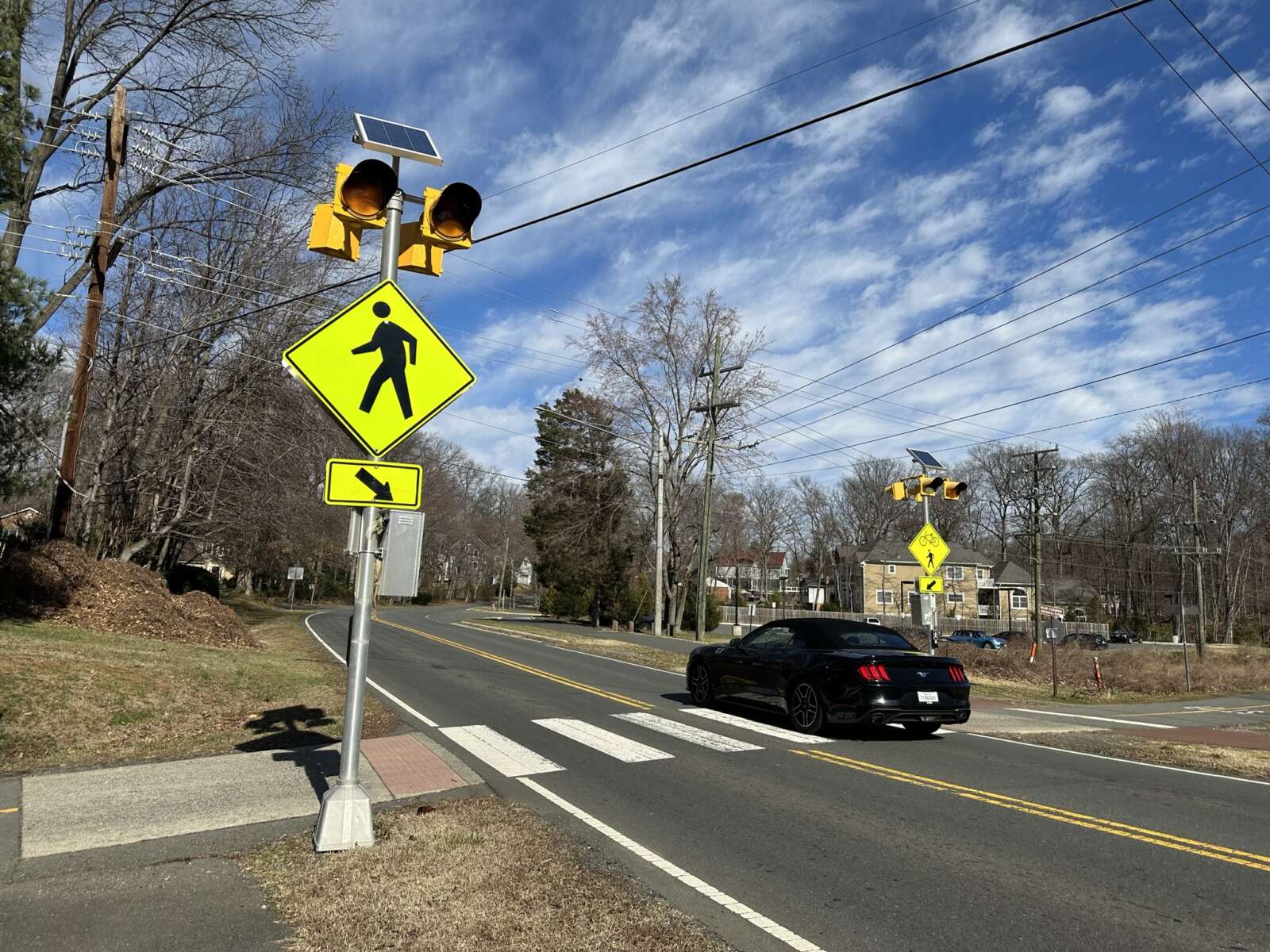
A new ordinance being considered by the Board of Supervisors could require drivers to be more careful around pedestrians.
The new ordinance aligns Fairfax County with a 2023 Code of Virginia change requiring drivers to stop — rather than yield — for pedestrians crossing in the driver’s lane, in an adjacent lane, or approaching the driver’s lane.
The change would require changing signage around the County with an estimated $95,000 bill.
At a Board of Supervisors meeting yesterday, Acting Fairfax County Department of Transportation Director Gregg Steverson said while the policy is enforceable by police County-wide, failing to stop for pedestrians can only have additional fines at intersections with the sign.
Board of Supervisors Chair Jeff McKay said the County will need to work to ensure information gets out about the change.
“It’s complicated for people to understand and complicated for our police to do enforcement,” McKay said. “This is a good thing; it’s an additional tool in our toolbox to prevent pedestrian fatalities and raise awareness about pedestrian laws, but at the same time, it’s going to be a hard one to communicate.”
Supervisor James Walkinshaw said the change sounds relatively simple, but involved extensive behind-the-scenes bureaucratic back and forth over what authority Fairfax County did or didn’t have.
“[We] had many meetings to get this issue resolved,” Walkinshaw said. “It’s more complicated than it sounds when you dig into it, but I’m excited to see us moving forward.”
The ordinance change is scheduled for a public hearing on May 7.
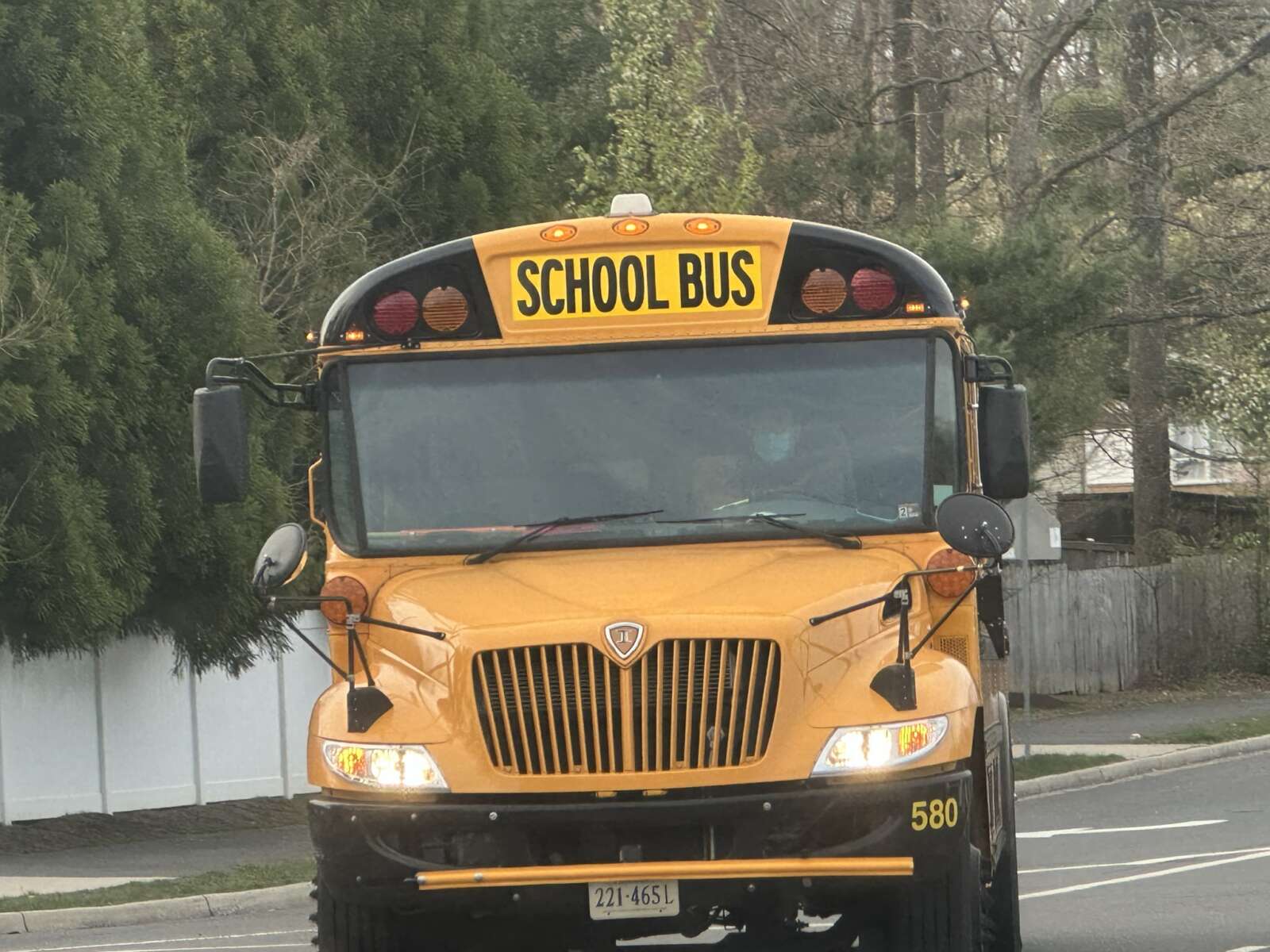
The Fairfax County School Board is moving ahead with its plan to change middle school start times.
According to Fairfax County Public Schools, research has shown that later start times could positively influence student academic performance and mental and emotional well-being.
Last September, the school system awarded consulting firm Prismatic Services a contract to develop a plan for changing middle school start times to 8 a.m. or later. The goal is to make these changes without changing high school start times or impacting the FCPS budget.
Currently, all middle schools start at 7:30 a.m. FCPS moved high school start times to around 8 a.m. in fall 2015 through its Blueprint for Change adoption. At the time, the then-superintendent said revisions to middle school start times would be considered at a later date.
At a meeting last Thursday (Feb. 22), the school board received an update on the plan from Prismatic Services President Dr. Tatia Prieto, who said the goal is to recommend start times to the board in January 2025 with the intent to implement changes by 2026, if the board adopts them.
“To get there, we have a number of milestone activities,” Prieto said. “The background report, which we’re currently engaged in, [covers] the history of efforts in Fairfax around this issue. We’re also developing a number of case studies with a few large school districts to look at lessons learned from their implementation.”
The firm will also conduct on-site observations at selected middle schools.
“This is going to include observing bus observations at selected middle schools in order to get a good feel for things,” Prieto said.
The plan also includes a total of eight public information sessions for the community — four in the spring and four in the fall.
“The spring ones are going to be more informational in nature,” Prieto said. “We’ll communicate about sleep research, and let participants discuss how later school start times could be beneficial and could be implemented. And then the fall ones will present two to four alternatives for input.”
Additionally, the firm will conduct online surveys and forums. One major concern in changing school start times is transportation constraints, which Prieto said would be covered in the information sessions.
“Analyzing the potential impact of moving middle school start times on both the number of drivers needed, and on all the special programs will be part of our work on this project,” Prieto added.
Mount Vernon District School Board Representative Mateo Dunne questioned how a possible time change would affect extracurricular activities like sports, particularly in the fall and winter when the sun goes down earlier.
Prieto pointed to Anne Arundel County Public Schools, which also hired Prismatic Services to help change its school start times.
“All of their middle schools start at 9:15. They shifted their sports program — which is much more extensive than what you currently have — to the after hours, and are not experiencing any problems,” she said.
Dunne also asked how a change in the start time would affect staff and teachers working at middle schools. Prieto said they propose surveying teachers to find out if they foresee any potential issues.
“I will add that we did develop, as one of the initial documents for this, a list of the key stakeholders we need to talk to,” she said.
Springfield District Representative Sandy Anderson requested more information on how later start times has affected attendance at other schools.
“I have an eighth grader. I can’t imagine having him have to get to school on his own at 9:40, so that is terrifying to me,” Anderson said.
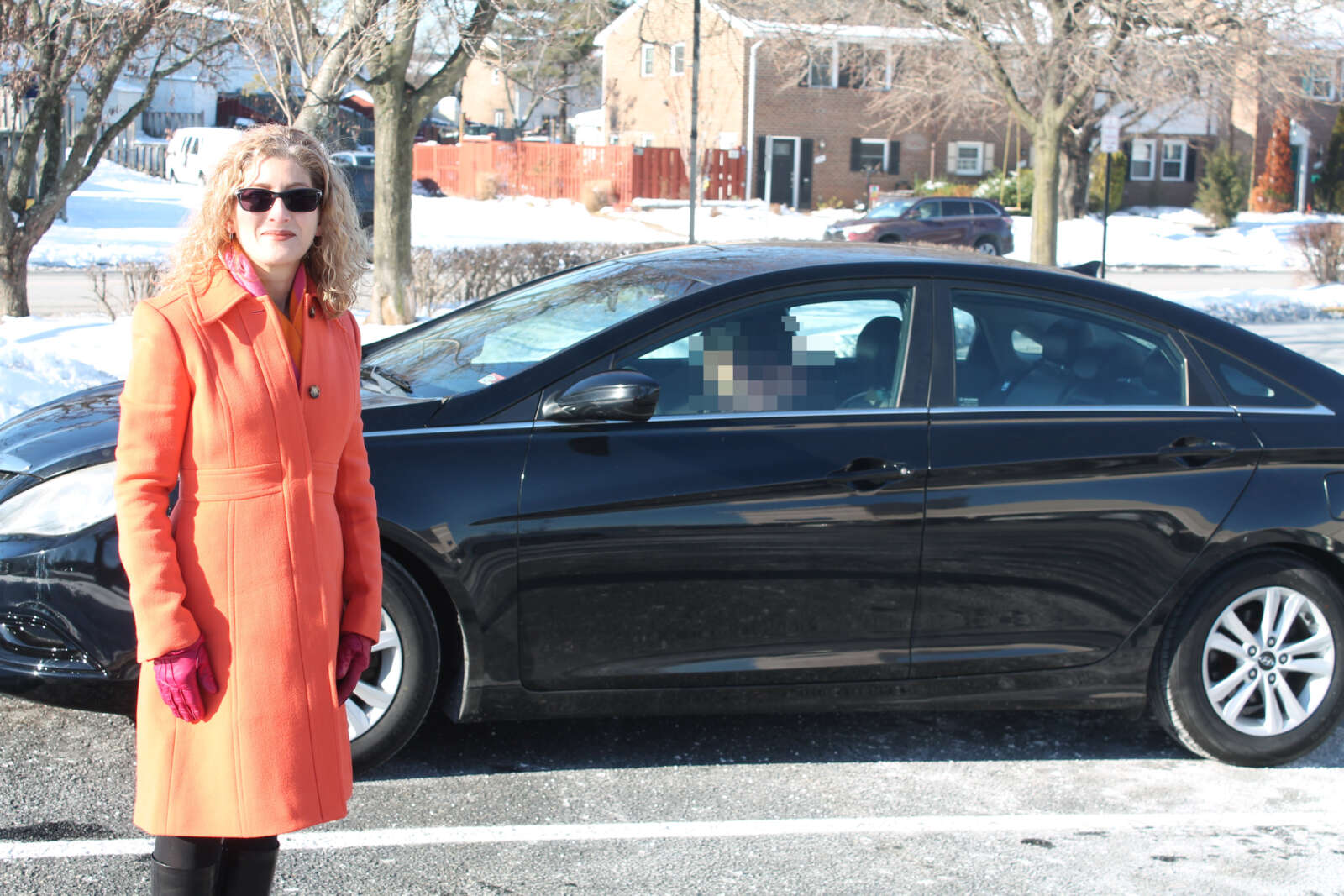
A Reston-based nonprofit organization is helping local refugees establish a new life in the U.S. by providing cars to them for free.
Last week, Rides for Refugees donated two cars to refugees living in Northern Virginia. Both of them are Afghan refugees who received special immigration visas.
One individual, Mohamed, received a visa after supporting the U.S. in Afghanistan through military service and humanitarian work. With a law degree in hand, Mohamed is actively looking for a new job after he and his family lost their home when they fled Afghanistan, where the Taliban re-assumed control in 2021.
“Rides for Refugees has given me hope,” he said. “Not only for myself, but for all my family. Having this car, I can get more professional jobs.”
The second recipient, Zed, is a college graduate who worked with U.S. military and defense contracting staff in Kabul. He arrived in the U.S. last summer after facing “enormous difficulty during a long journey” and is now working and taking classes, though the car will enable him to look for jobs farther from his new home, according to Rides for Refugees.
“This is a big moment for me,” Zed said.
The organization is the brainchild of Jacqui Olkin, a lifelong Restonian and graduate of Fairfax County Public Schools. She also owns a web design consulting firm, Olkin Communications Consulting.
Olkin founded Rides for Refugees, which serves individuals across the country, in 2022. The nonprofit began providing cars to refugees this month after receiving tax-exempt status from the government.
She was inspired to found the organization after her friends, Slava and Nina, faced major transportation hurdles as refugees from Ukraine.
“They went through a horrible ordeal and lost their home, cars, jobs, and belongings,” Olkin told FFXnow. “The bank accounts were frozen because their city is a conflict zone. They were resettled in a small village in a European country, far from jobs and services, and their life has been extremely difficult.”
According to Olkin, Slava says she and Nina miss their cars the most out of all the material possessions they lost.
“Vehicles mean opportunity — to work for yourself, to look for jobs, to get to work and be financially independent,” Olkin said. “My friends’ ordeal got me thinking about what the refugee experience is like in the United States, and the role transportation plays in refugees’ ability to restart their lives and become self-reliant.”
In her research, Olkin said she found that 45% of Americans don’t have access to public transit, and few organization meet the transportation needs specifically of refugees.
“Rides for Refugees is national is scope,” she said. “In our application process, refugees must prove their identity, income level, and legal status and have a resettlement agency or other not-for-profit cosign the application. Refugee applicants are referred to us by many of the U.S. government-funded national resettlement agencies, as well as local nonprofits who help refugees.”
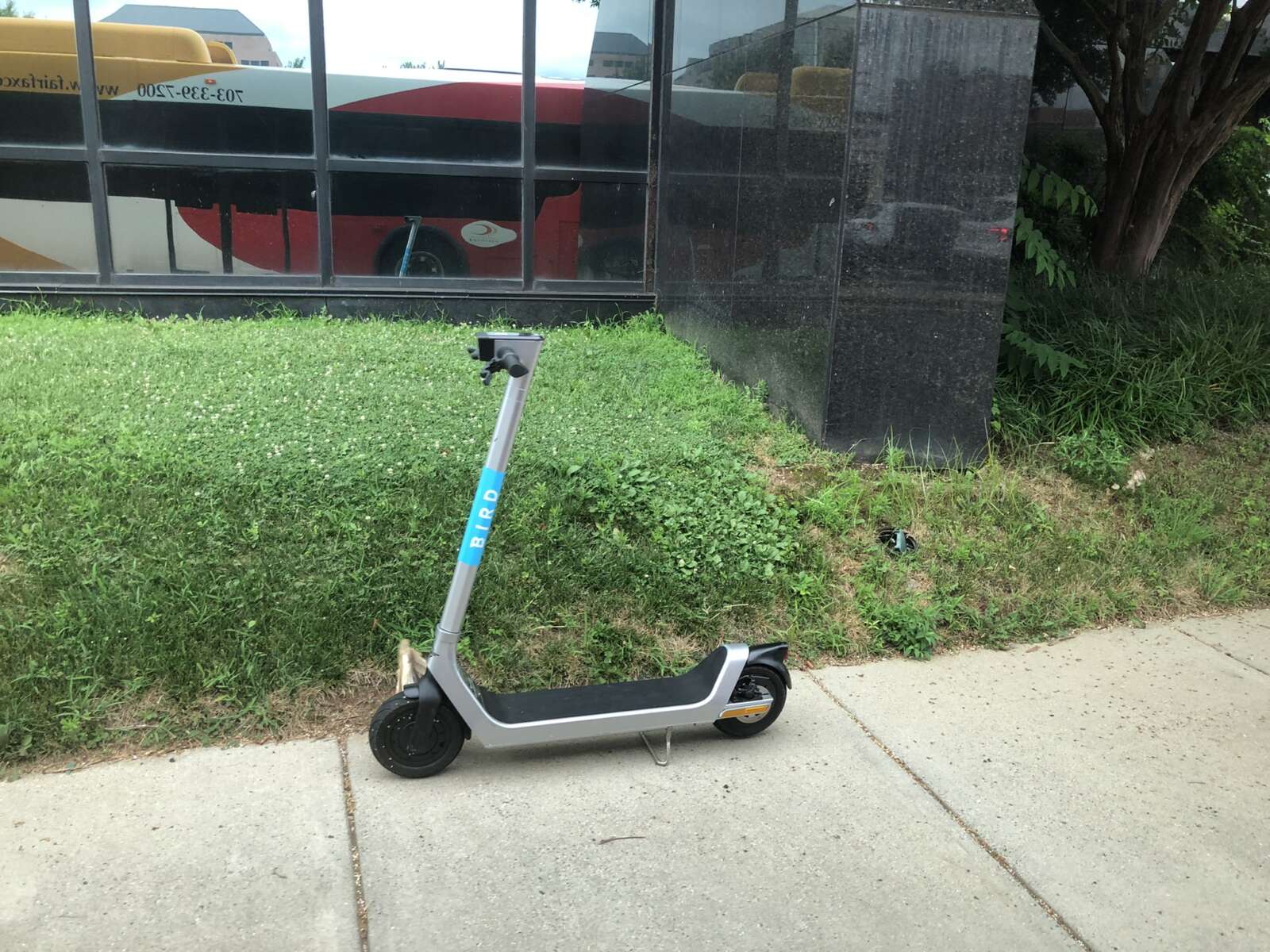
Fairfax County’s only electric scooter provider will continue operating even after filing for bankruptcy last month.
The company, Bird, will also maintain its scooters in Fairfax City, where it’s one of two companies in a pilot program.
“We expect to continue operations in Fairfax and Fairfax County as normal and we look forward to working with the city and county administration as a partner into the future,” a Bird representative wrote in an email to FFXnow.
The county and city have both been told by the company that service will go on. Bird has permission to operate 300 devices in Fairfax County, while the City of Fairfax generally permits up to 250 devices per company.
Bird and Superpedestrian’s LINK got permission to bring their products to Fairfax County in July 2021 following a November 2019 county board ordinance regulated shared mobility devices. Superpedestrian recently stopped all U.S. operations, though it had already been dropped from the county’s operator list after failing to renew its permit in January 2022.
The county doesn’t appear to have any new partners in the offing at the moment.
“Anyone may submit a Shared Mobility Device Operator Permit Application for review,” wrote Rebecca Makely, director of the county’s department of cable and consumer services, in an email to FFXnow.
Bird’s shared mobility devices saw nearly 20,000 rides between July and December 2023, according to data provided by the county, with an average ride distance of just over a mile during that period.
FairfaxCity authorized a shared mobility pilot program of its own in May 2019, but has yet to establish a permanent program. Bird and San Francisco-based Lime are currently authorized under the pilot, which the city council unanimously voted to extend through June 30, 2024 at a Jan. 9 meeting.
City staff expects to develop a proposal for a more permanent program by the time this extension ends.
“There was a lot of bumpiness during Covid, but a lot of the operations and usage have stabilized, and we feel like we can now begin to transition to a more permanent, long-term program,” Chloe Ritter, the city’s multimodal transportation planner, said at the meeting.
While the city doesn’t expect Bird’s bankruptcy filing to have immediate effects, it could inform program planning.
“We can’t predict what’s going to happen in six months or two years, but I think it’s a good reminder for us to keep our program flexible to respond to those kinds of things,” Ritter said.
In neighboring Arlington County, scooter and e-bike provider Veo recently declined to renew its permit, citing market conditions. Superpedestrian is also exiting Arlington as it shutters its U.S. business.
Bird and Bird-owned Spin still operate in Arlington, as does Lime, which announced near the end of 2023 that it had logged 500 million total rides on its devices.
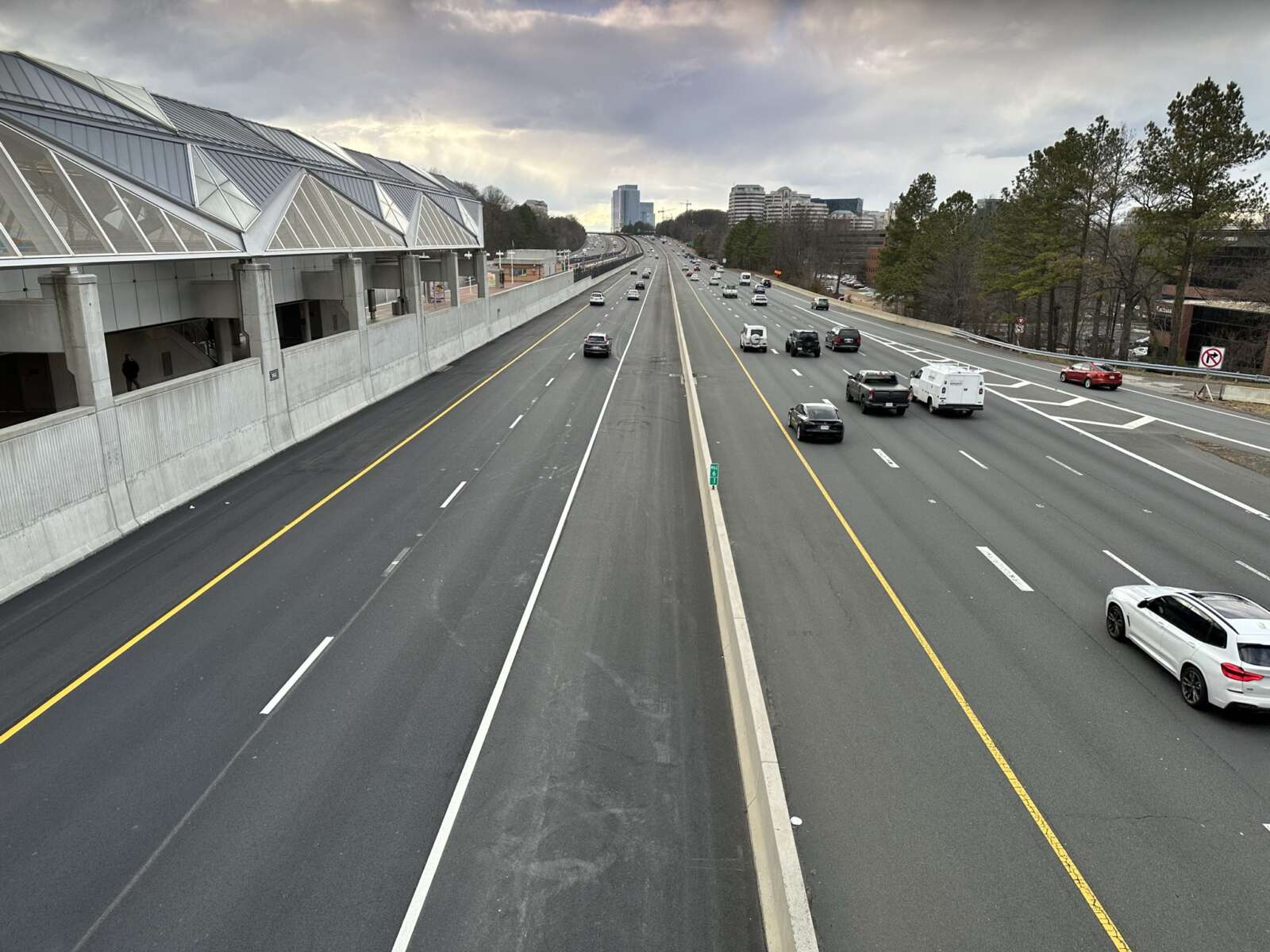
Fairfax County has launched a new data dashboard to offer insights into its mobility and transportation realm.
The dashboard — which was developed as part of the county’s strategic plan — dives into four indicators: efficient and varied transportation options; infrastructure conditions, sustainability and environmental impact; traveler safety; and increased accessibility, affordability and equity.
So far, data shows that working from home is decreasing after spiking at the start of the COVID-19 pandemic. According to the dashboard, 27.9% of residents worked from home in last year, down slightly from 37.2% in 2021.
Of the people who commuted last year, roughly 9 in 10 residents drove to work — with 80% driving alone.
The dashboard also highlights a spike in traffic-related deaths. In 2022, there were 60 fatal crashes, up 43% from 2019.
Although crashes of all types decreased by 17% from 2019 to 2022, the total number of crashes increased by 31% between 2020 and 2022.
Data from the dashboard is intended to illustrate how the county is doing on efforts to move away from reliance on single-occupancy vehicles, improve walkability and reduce traffic-related incidents.
“The dashboard is designed to inform residents and stakeholders, monitor progress overtime, identify any demographic or geographic disparities among residents, and guide community leaders, practitioners, and advocates in making data-driven decisions,” the county said in a news release.
The dashboard also highlights the fact that the county has installed 620 traffic calming devices since 1998, most of them at speed humps and speed tables.
The county plans to update the dashboard on a yearly basis in order to monitor community progress.
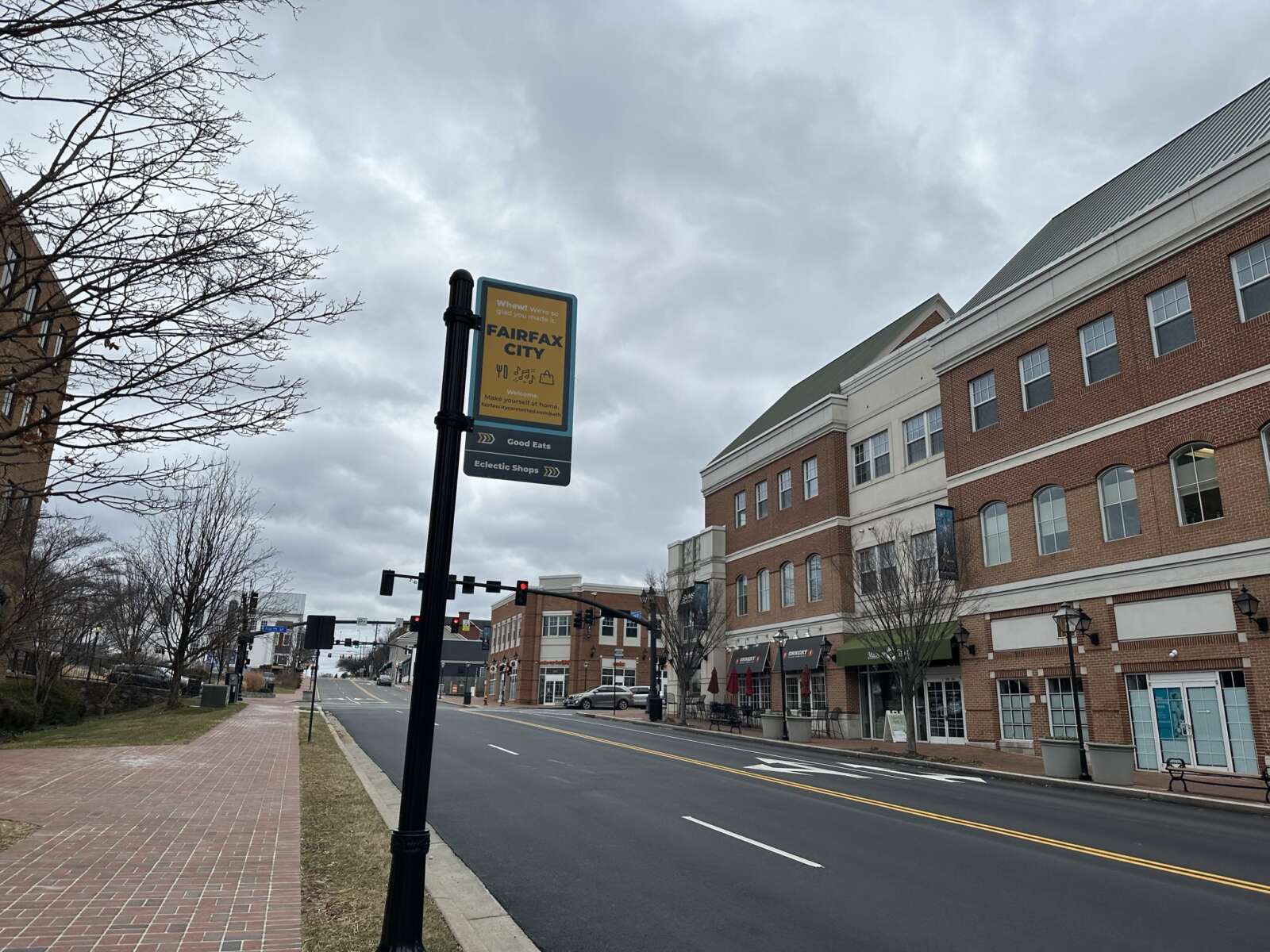
Fairfax City is starting to refine its plans to add bicycle facilities on University Drive.
The project will “implement bicycle facilities on University Drive between Layton Hall Drive and South Street, with shared lane markings through the center of Old Town and bicycle lanes to the north,” according to the city’s website.
It will serve as a link to other multimodal projects currently underway in the area, such as the partially built George Snyder Trail, Chloe Ritter, the city’s multimodal transportation planner, told the Fairfax City Council at a meeting on Oct. 24.
“It connects to the bike lanes that are already existing on University Drive, south of Old Town. It connects to The Flats — the apartments that recently opened,” Ritter explained. “It really brings together a lot of the multimodal projects that we’ve been working on in connecting everything together.”
In addition to the bicycle facilities, the city hired consulting firm Kimley-Horn to evaluate possible changes to the University Drive and Layton Hall Drive intersection.
“The measures of evaluation that we looked at were bicycle and pedestrian safety, vehicle safety traffic operations, transit operations, property impacts implementation, and cost,” Megan Waring, a transportation engineer for the consultant, said at the council meeting.
She said ultimately, the firm recommends a two-way stop and a removal of the northbound, right-turn lane at the intersection, which will be condensed. Waring said that change allows for a pedestrian island that will improve safety.
“It allows us to have bike lanes as we’re coming up and down University, as we have kind of that steep incline or decline, depending on which way you’re traveling,” she said.
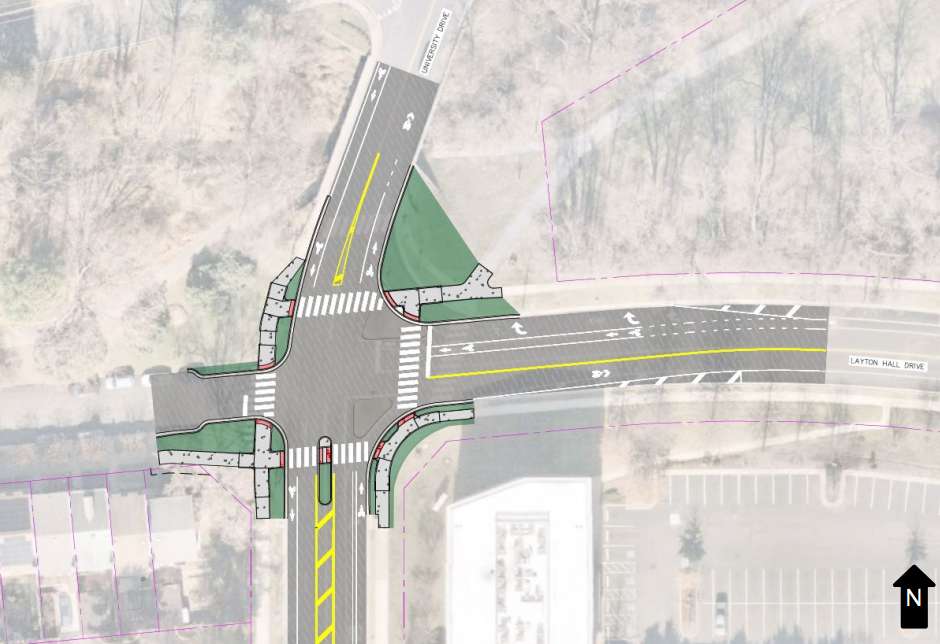
Tightening the intersection would also enable it to accommodate an added crosswalk, giving it a total of four. The crosswalks will also be closer to the intersection.
“So, we’re moving the people, the bikes, and the cars all to a location that’s more centralized, so that all users are able to see each other and make safe passage through the intersection itself,” Waring said.
The recommendations also call for adding a median refuge island, a protected space in the center of the street that facilitates bicycle and pedestrian crossings.
Waring said, together, the recommendations would reduce bicycle and vehicle conflicts, improve pedestrian crossings and maintain transit and vehicle operations. Read More
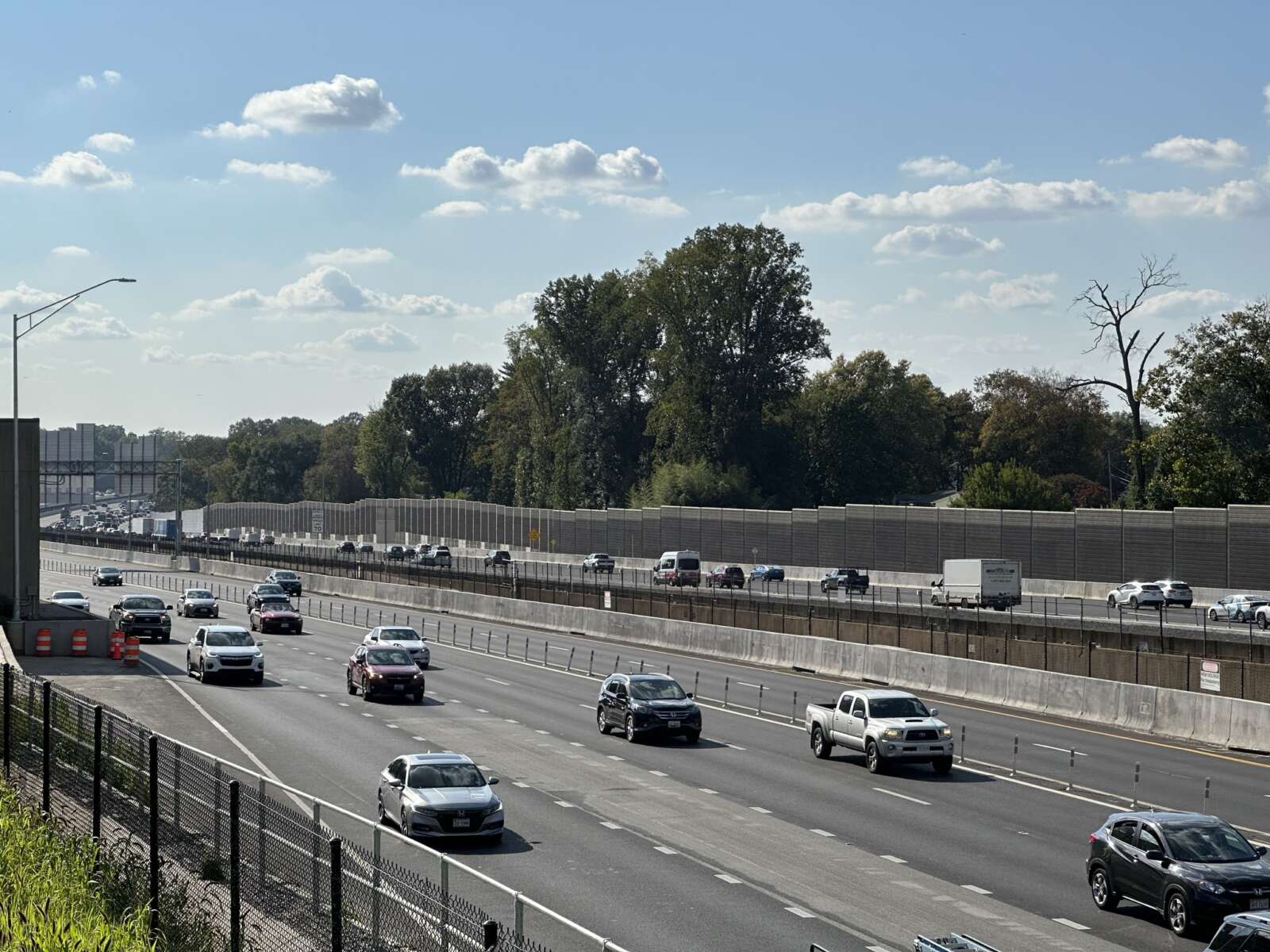
Planning officials in the Shenandoah Valley and central Virginia fear proposals to change Virginia’s transportation funding system could significantly reduce state funding for smaller transportation projects for cyclists and pedestrians.
The Commonwealth Transportation Board has been reviewing the state’s transportation funding process, SMART SCALE, which has been in place for the past seven years.
Some of the proposals being considered by the board include favoring larger transportation projects over smaller ones, lowering the number of applications local governments and planning organizations can submit and reducing the weight given to land use in applications.
Significantly, many bike and pedestrian projects could go unfunded under the proposed changes. According to data collected by a working group made up of Virginia’s Office of Intermodal Planning and Investment, which advises state transportation leaders, and several consultants, 75% of the bike and pedestrian projects recently funded through SMART SCALE would have gone unfunded under the new rules.
“We certainly think there’s a lot of focus on highway road expansion statewide and no focus on climate change impacts with this approach,” said Stewart Schwartz, executive director of the Coalition for Smarter Growth.
Trip Pollard, a senior attorney with the Southern Environmental Law Center and leader of its Land and Community Program, said he’s concerned the proposed changes to SMART SCALE will harm the state’s ability to meet its goals of reducing air pollution and protecting the environment.
“Staff is doing some great work on this and there are some good reasons for some of these changes, but cumulatively, I definitely don’t agree with them,” Pollard said. “I think it really fundamentally shifts where the money is going to go.”
Other changes attempt to evaluate projects over a longer time scale. For example, the working group is recommending that the Commonwealth Transportation Board consider adding to the application process a project’s congestion benefits 10 years into the future and forecast the economic value of a project.
“What we’re doing here is trying to get at the metrics that better show us the value so that we can apply that in our scoring system,” said Transportation Secretary Shep Miller at the board’s Sept. 20 work session.
Making room for larger projects
One of the most controversial recommendations made by the working group, which has been reviewing the SMART SCALE proposals since March, is for Virginia to expand its definition of “high-priority projects,” or projects that have a regional or statewide significance.
Currently, state law defines high-priority projects as those that “reduce congestion or increase safety, accessibility, environmental quality or economic development.”
The working group is recommending adding to that list projects that include “new capacity highway, managed lanes, new or improved interchanges, new or improved passenger rail stations or service, freight rail improvements, high-capacity fixed guideway transit, transit transfer stations, and new bridge.”
Planning leaders from the Shenandoah Valley and central Virginia, however, worry that expanding the high-priority designation could edge out other, smaller kinds of transportation proposals by weighting decisions against them. That could force local governments to find other sources of funding. Read More
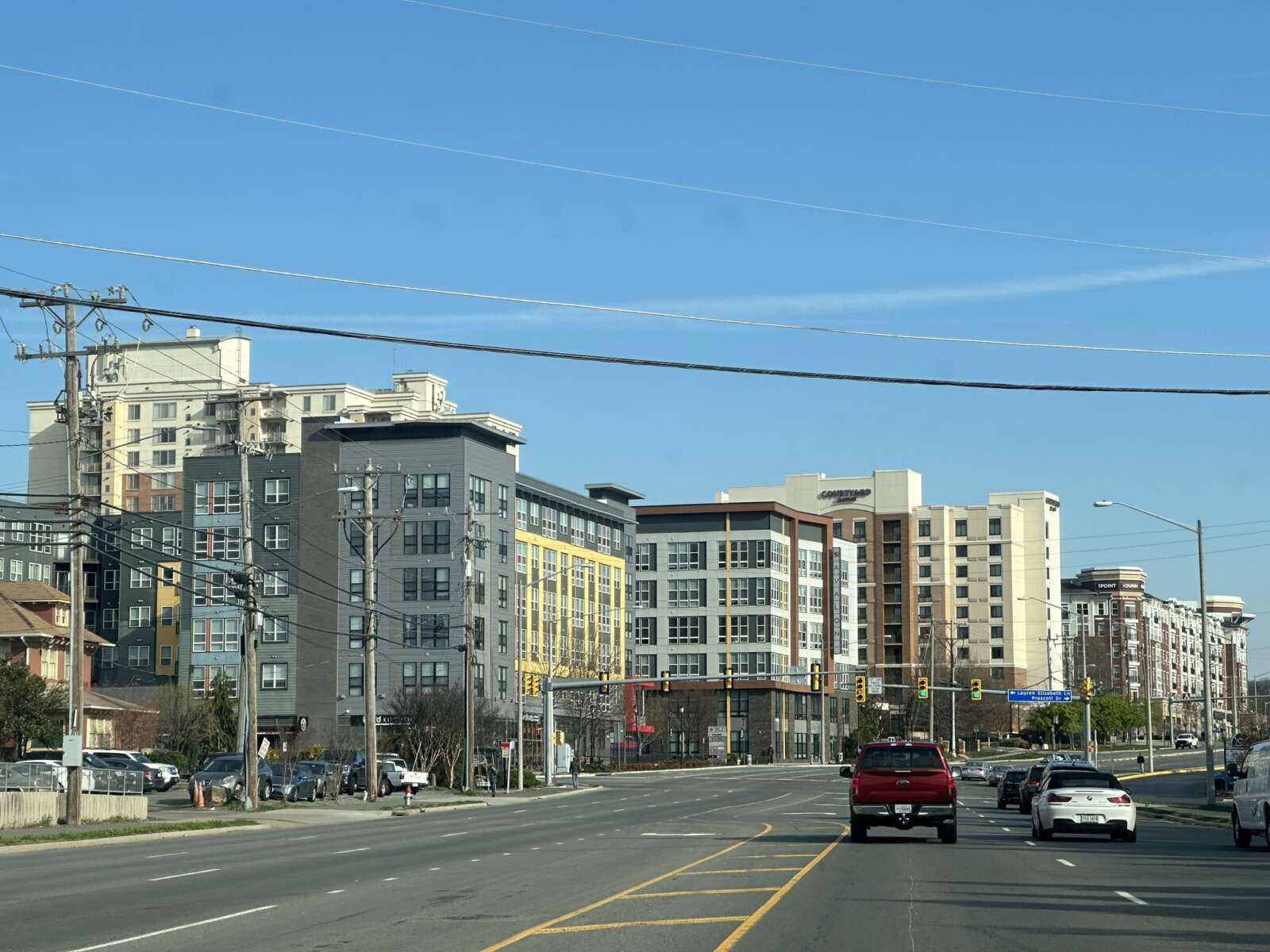
The Fairfax County Department of Transportation is ready to take a hard look at the future of Gallows Road.
The department will introduce a Gallows Road Multimodal Study with two public meetings next week, seeking feedback on enhancing mobility and safety along the major road between Tysons and Annandale. It will also give an update on the current travel conditions.
According to FCDOT communications head Freddy Serrano, the study is needed to address various transportation and connectivity challenges in the Gallows Road corridor.
“[Those include] pedestrian and bicycle facilities, limited mobility options, traffic conditions, and barriers created by I-495,” he said. “It aims to explore opportunities to mitigate these barriers and improve multimodal mobility between the planned land uses on the east and west sides of the interstate.”
Serrano says the goal is to find solutions and improve accessibility for everyone who uses the corridor, while supporting planned development.
Merrifield in particular is poised for growth. This spring, the county designated proposals to redevelop aging buildings in the area as top priorities for review, and plans to convert former Inova office buildings into live/work units recently raised concerns about traffic backups at the Gallows and Gatehouse Road intersection.
“Additionally, the study is essential for securing funding and planning for transportation infrastructure projects that align with the goals of the comprehensive plan and accommodate future development,” Serrano said.
The study stems from a comprehensive plan amendment that the Fairfax County Board of Supervisors approved in 2019, opening up the Merrifield Suburban Center to more mixed-use development. With the vote, the board also directed staff to:
- Conduct a comprehensive study of multimodal transportation opportunities
- Study the barriers to connectivity in the Merrifield suburban center created by I-495, and opportunities to mitigate the barriers
- Develop a funding plan for the transportation infrastructure improvements recommended in the Merrifield suburban center comprehensive plan.
The study started late last year, and it’s expected to wrap up by 2024.
“Overall, the study aims to improve transportation infrastructure and connectivity within the Merrifield suburban center and along Gallows Road to support sustainable development and enhance mobility for residents and stakeholders in the area,” Serrano said.
The first meeting is scheduled for Tuesday, Sept. 19. at 7 p.m. and will be virtual. A second meeting will be held in person at Luther Jackson Middle School (3020 Gallows Road) on Wednesday, Sept. 20 at 7 p.m.
Comments will be accepted until the end of the business day on Friday, Oct. 6.
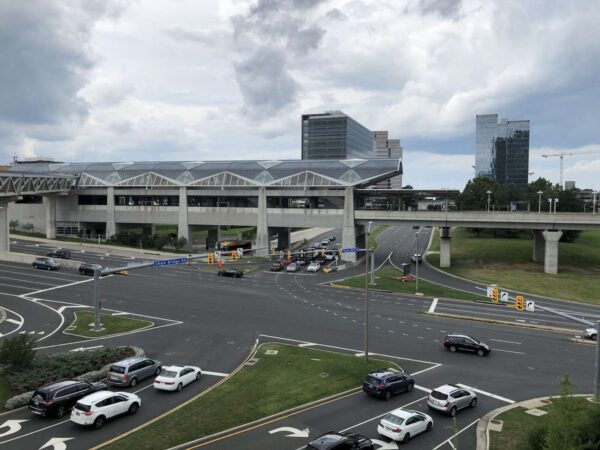
Local officials are in the midst of developing a data-driven way to prioritize and implement spot transportation improvements throughout Fairfax County.
The spot improvement screening program, which was discussed at a Fairfax County Board of Supervisors’ transportation committee meeting on July 18, lets the county identify priority locations for new transportation improvements, especially along intersections.
The program also intends to prioritize safety as a metric to evaluate transportation.
So far, the county has identified 287 projects as high priority out of a total of 3,966 reviewed locations. Roughly 46% of the spots already have a planned project nearby, according to the county.
The Dranesville District had the most spots, but the majority of them were categorized as “low priority.” The Franconia and Mason districts led the way in terms of high-priority spots.
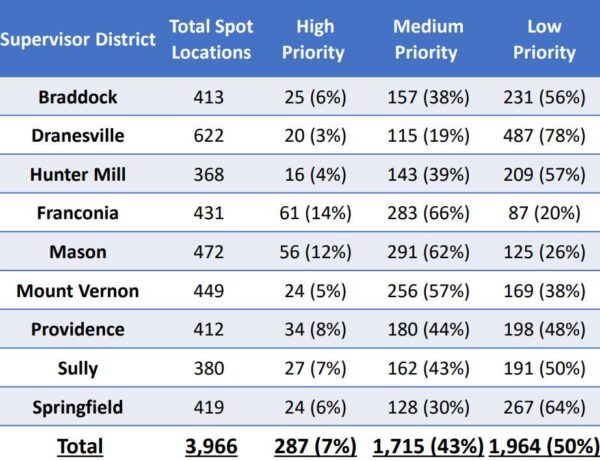
Underway since 2021, the county’s methodology prioritizes safety while also considering equity and the multimodal nature of the area, Fairfax County Department of Transportation staff said.
The county is in the midst of finalizing locations for each district. Evaluation and implementation is contingent on approval by the Board of Supervisors.
FCDOT staff recommend focusing on high priority locations and working with the Virginia Department of Transportation to strategize funding for projects. Staff also suggested further narrowing spots where there are no programmed safety-related projects.
If approved, the spot improvement program could get renewed every three to five years.
While the full list of possible spot improvements was not released at the meeting, Vanessa Holt from FCDOT’s traffic engineering section said that public input will be solicited on projects.
“Our program recommendations include focusing on the high priority spot locations,” Holt said.
At the meeting, supervisors asked staff to consider other elements in their evaluations. Hunter Mill District Supervisor Walter Alcorn suggested incorporating near-misses, camera data from VDOT, and other data points into the prioritization process.
“I really like the process, the drivers being data-driven,” Alcorn said.
The program, which is not yet funded, is different from the county’s active transportation program, which sets aside $100 million for improvements for pedestrians, bicyclists and other non-motorized travelers.
Board Chairman Jeff McKay also emphasized that not all traffic fatalities are linked to road safety issues.
“Unfortunately, we do have fatalities in some corridors of the county. It’s not a road design issue at all,” McKay said.
He also added that the proximity of other projects to prioritized spot improvement locations shouldn’t automatically downgrade a project from the list. Instead, the location may be a strategic area to kill two birds with the same stone.
Others like Springfield District Supervisor Pat Herrity noted that funding for these projects may not be available for several years, resulting in the need to manage public expectations about implementation.
Holt acknowledged that the public’s feedback is critical as the process moves forward.
“We recognize that data analysis is not perfect when we have that human element in transportation safety,” Holt said.

